1. Market discount rate update - introduction
Inflation has slowed but economic uncertainty continues to drive market volatility, with growth in the Australian economy and household spending slowing. The selection of a reasonable discount rate therefore remains a key consideration, whether for the purpose of financial reporting or for any valuation analysis.
The following chart presents a summary of the overall change in our assessment of the weighted average cost of capital (WACC) for the market as a whole from 31 December 2022 to 30 June 2023.
Market discount rates have declined
Source: Leadenhall
Note: Movement in WACC is for the overall market and is not company specific.
“Inflation in Australia has passed its peak and the monthly CPI indicator for May showed a further decline. But inflation is still too high and will remain so for some time yet.”
Philip Lowe, RBA Governor
“ASIC urges directors, preparers of financial reports and auditors to assess the impact of uncertain market and economic conditions on reporting for full and half-years ending 30 June 2023… Assumptions underlying estimates and assessments for financial reporting purposes should be reasonable and supportable.”
ASIC – highlighting focus areas for 30 June 2023 reporting
The cost of capital has decreased slightly over the period due to a decline in the equity market risk premium (EMRP). All other things being equal, this will lead to slightly higher asset values.
The ongoing economic uncertainty increases the need to adopt the best practice approach of using expected (i.e., probability weighted) cash flows as the basis for valuations. In fact, the greater uncertainty associated with future earnings indicates that additional rigour may be required in developing robust projections. These forecasts should be coupled with an appropriate discount rate.
As recognised experts, this update helps you understand the assumptions we make which you can rely on for a reasonable outcome.
Leadenhall Solution:
It is important to understand and be able to justify the assumptions that support your projected cash flows and WACC as well as ensuring cross-checks to market metrics (such as market capitalisation and EBIT multiples) are undertaken. Leadenhall can assist with this analysis.
2. Framework
Weighted Average Cost of Capital
Model
WACC = Ke x (E/V) + Kd x (D/V) (1-t)
Components
WACC Weighted average cost of capital
Ke Cost of equity
E/V Proportion of equity in capital structure
Kd Cost of debt
D/V Proportion of debt in capital structure
t Corporate tax rate
V Market value of business (where V = D + E)
Capital Asset Pricing Model
Model
Ke = Rf + β(Rm – Rf) + α
Components
Ke Cost of equity
Rf Risk free rate
β Beta, a measure of exposure to market risk
Rm Required return from investing in the market
Rm – Rf Equity market risk premium
α Company specific risk premium
Application to Specific Businesses
Determining an appropriate discount rate to apply to a specific business may require consideration of variables and risks unique to that business. This may be addressed through the inclusion of a company specific risk premium in the discount rate.
3. Selecting the risk-free rate (Rf)
The risk-free rate should be in the same currency as the asset being valued and its maturity should match the life of the investment. In Australia, the most common proxy for the long-term risk-free rate is the yield on ten-year Commonwealth Government bonds which have been as follows:
Risk-free rates remain close to historical lows
Dec 2022
4.05%
Jun 2023
4.03%
Change
(0.02%)
The negligible change in government bond yields between the two dates is unlikely to result in a material change in overall discount rates, all other things being equal.
Risk-free rates remain close to historically low levels. Rather than adopting current market observed risk-free rates, some valuers are adjusting observed risk-free rates to reflect a long-term average rate. However, some of these valuers are then not adjusting other parameters accordingly – leading to inconsistent and unreliable discount rate conclusions.
Leadenhall Solution:
We avoid the dangers of normalising by using market observed risk-free rates coupled with a contemporaneous assessment of the EMRP. This better reflects the current views implicit in capital markets and responds more quickly to changes in market pricing.
4. Assessing Beta (β)
A few industries have seen moderate changes in beta
Source: RoZetta Institute Ltd – Risk Measurement Service as at 31 March 2023 (latest available)
There have been a number of moderate changes over the past six months and, out of 24 discrete industries reported, only the 7 industries above showed a change in the observed beta of 0.10 or greater.
Leadenhall Solution:
Rather than simply adopting an industry beta, we recommend undertaking a detailed analysis of the companies in a sector that have comparable risk to the business being valued. The betas for comparable companies should be based on data up to 30 June 2023 and generally need to be ‘ungeared’ to remove the impact of actual debt levels and then ‘re-geared’ to the optimal debt level (which is not necessarily the actual debt level) of the business being valued.
5. Cost of debt (Kd)
The cost of debt is generally related to the risk-free rate, with the difference being a credit spread. The following table shows that corporate lending rates have declined against broadly unchanged risk-free rates (indicating a narrowing of the credit spread) since December 2022. This is based on the yields of BBB-rated corporate bonds.
Lending rates are similar to prior periods

Leadenhall Solution:
Instead of historical borrowing costs, the cost of debt should be based on the current borrowing cost – as if the business were to be refinanced in the current market at ‘optimal’ gearing levels.
6. Declining market risk premium
Equity market movements can be broken down into changes in earnings, changes in growth expectations and changes in discount rates. We then disaggregate the change in discount rates into movements in the risk-free rate and movements in the market risk premium in the following charts.
Decline in the implied EMRP
Source: Leadenhall
Note: Growth relates to longer-term growth expectations, not changes in near-term earnings.
The chart presented above shows an increase in the index driven by a decline in the EMRP, offset in part by weaker earnings growth expectations.
Leadenhall Solution:
We have decreased our assessment of the EMRP from 5.75% at 31 December 2022 to 5.5% at 30 June 2023. This reflects the effect of the EMRP on market indices.
Leadenhall Solution:
As with the cost of debt, the proportion of debt used in the calculation of WACC should be based on an optimal capital structure. This is not necessarily the actual level of debt in the company or the average observed in an industry at any particular point in time. The efficient or optimal level of debt included in a discount rate should be an assessment of the level of debt that can be sustained by the specific business or CGU over the medium to long term.
8. Our other concerns that may attract attention
Given ongoing market volatility, inflation/recession concerns and the heightened uncertainty around future earnings and cash flows, emphasis should be placed not only on the discount rates adopted but on the preparation of robust cash flow projections. Some common issues we have observed are:
◆ Optimistic forecasts with insufficient allowance for capital investment and / or time to recovery
◆ Inconsistencies between the discount rate and cash flows
◆ Relying on a single valuation methodology without considering any cross-checks.
Our difference
Leadenhall doesn’t just offer thought leadership; it prides itself on knowledge delivery. Reports such as these contain the most recent, relevant information available, clearly presented to go beyond the maths and provide you with a deeper understanding of the critical issues.
This analysis is updated regularly throughout the year with reports issued in December and June in line with full year and half year reporting for most Australian companies. Discount rates herein are expressed in nominal post-tax terms.1
1 Accounting standard AASB 136 – Impairment of Assets requires value in use to be assessed with a pre-tax discount rate (paragraph 55). However, market practice in Australia is to perform this analysis using a post-tax discount rate (and post-tax cash flows), with the implied pre-tax discount rate being disclosed in the financial statements.









